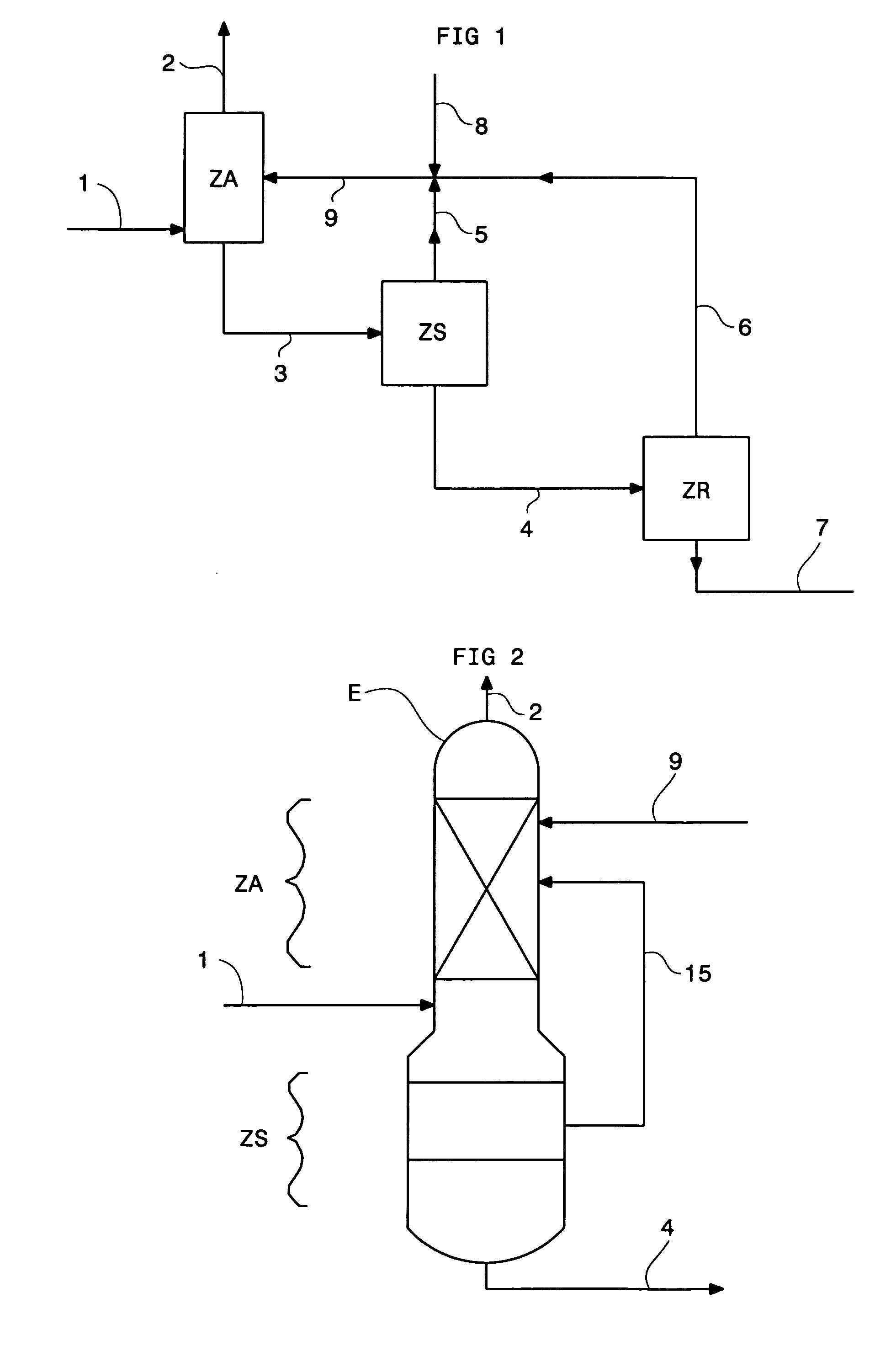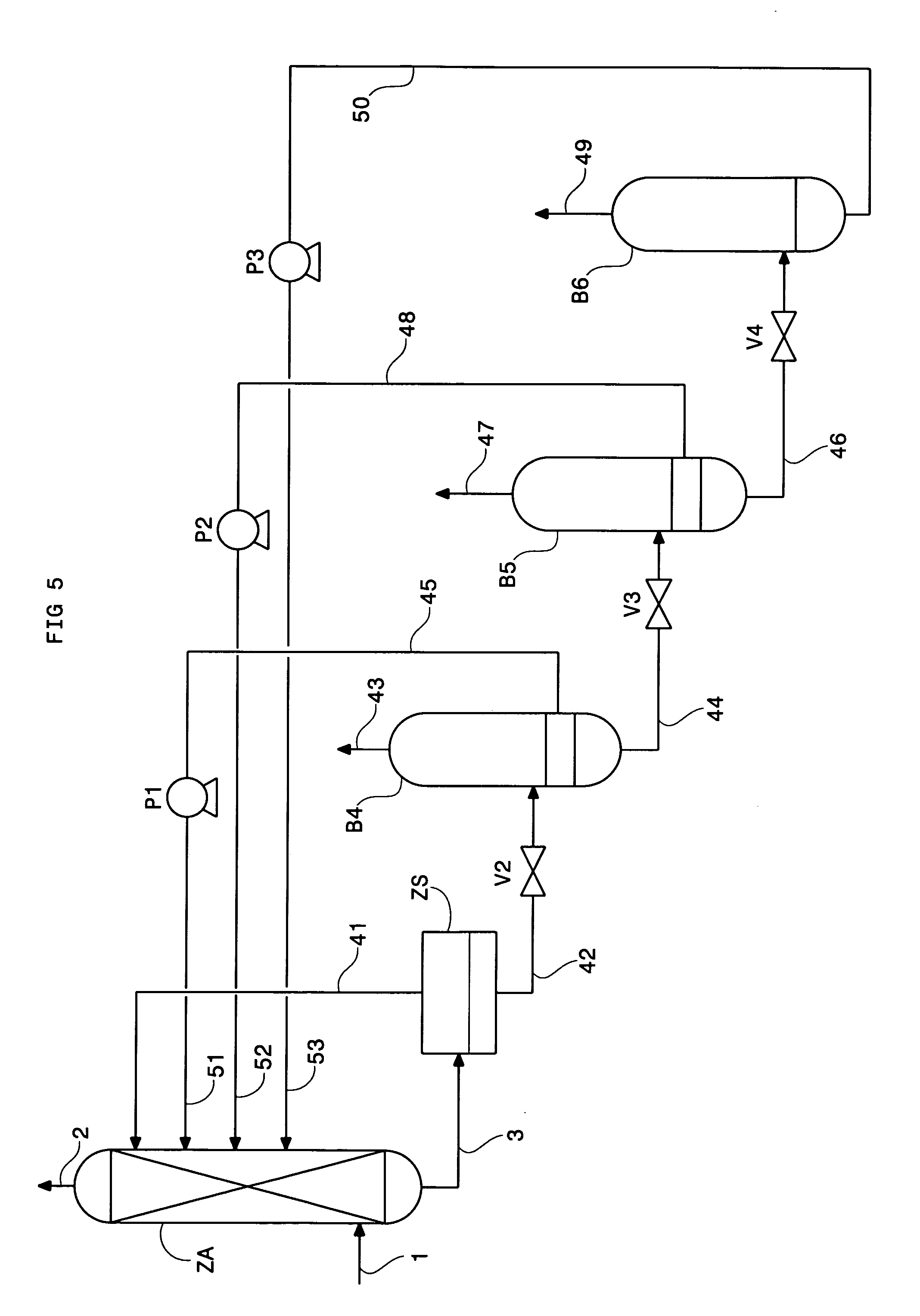Method of deacidizing a gas with a fractional regeneration absorbent solution
a fractional regeneration and absorbent solution technology, applied in gaseous fuels, hydrogen sulfides, separation processes, etc., can solve the problems of reducing the energy consumption of separation agent regeneration, reducing the efficiency of absorbent, so as to reduce the amount of energy required
- Summary
- Abstract
- Description
- Claims
- Application Information
AI Technical Summary
Benefits of technology
Problems solved by technology
Method used
Image
Examples
example 1
[0112] A solvent containing 80% by weight of N,N,N′,N′,N″-pentamethyl-dipropylenetriamine and 20% by weight of water is contacted at 40° C. and at atmospheric pressure in a gas-liquid contactor with a gaseous N2—CO2 mixture containing 30% by volume of CO2. Absorption of the carbon dioxide in the solvent leads to demixing of the solvent into two liquid phases. The absorbed CO2 is concentrated in the heavy phase with 70% of the water initially present in the solvent. This phase represents 28% of the total weight of solvent.
[0113] Addition of phosphoric acid (2% by mole of the amine) allows to obtain demixing with a gaseous N2—CO2 mixture containing 10% by volume of CO2.
[0114] Regeneration by stripping with nitrogen or thermal regeneration by distillation of all or of a fraction of the two-phase solvent, notably the phase rich in absorbed CO2, allows the solvent to recover its absorption capacity towards CO2.
example 2
[0115] Various H2S injections are performed on 160.5 g of a water-N,N,N′,N′,N″-pentamethyldiethylenetriamine solvent of composition 25-75 % by weight, at a temperature of 40° C. in a closed reactor. When the H2S partial pressure in the reactor exceeds 0.3 bar, separation of two liquid phases is observed. Sweeping with nitrogen allows to strip the hydrogen sulfide absorbed by the solvent which becomes a single-phase solvent again and recovers its absorption capacities.
example 3
[0116] Consider the case of a postcombustion fume containing 13% by volume of CO2. Decarbonation of this effluent in order to capture 90% of the carbon dioxide is most often carried out by means of a method using an aqueous MEA solution.
[0117] The fume is treated at 40° C. by a solvent containing 30% by weight of MEA in aqueous solution. The alkanolamine is partly carbonated: 18% of the MEA is not regenerated during the regeneration stage applied to the total solvent used in the method. The energy cost in relation to the ton of CO2 produced is essentially linked with the regeneration cost of the solvent containing up to 0.50 mole CO2 per mole of amine when it is fed to the regeneration stage. The regeneration cost is estimated at 4.3 GJ / ton of CO2, distributed between the sensible heat of the solvent, 10%, and especially between the vaporization heat and the reaction heat between the CO2 and the monoethanolamine, 45% each.
[0118] In cases where, according to the invention, a tertia...
PUM
| Property | Measurement | Unit |
|---|---|---|
| pressure | aaaaa | aaaaa |
| temperature | aaaaa | aaaaa |
| temperature | aaaaa | aaaaa |
Abstract
Description
Claims
Application Information
 Login to View More
Login to View More - R&D
- Intellectual Property
- Life Sciences
- Materials
- Tech Scout
- Unparalleled Data Quality
- Higher Quality Content
- 60% Fewer Hallucinations
Browse by: Latest US Patents, China's latest patents, Technical Efficacy Thesaurus, Application Domain, Technology Topic, Popular Technical Reports.
© 2025 PatSnap. All rights reserved.Legal|Privacy policy|Modern Slavery Act Transparency Statement|Sitemap|About US| Contact US: help@patsnap.com



